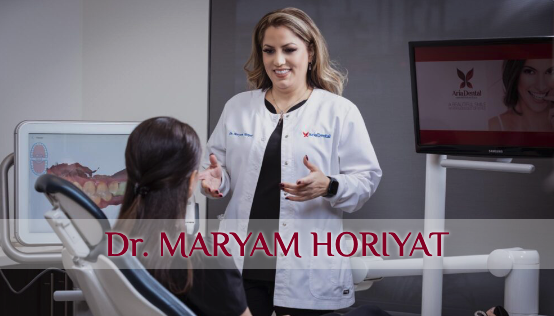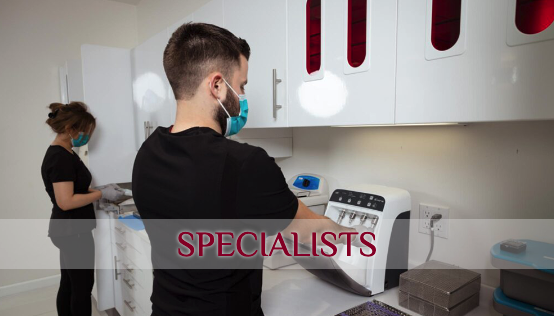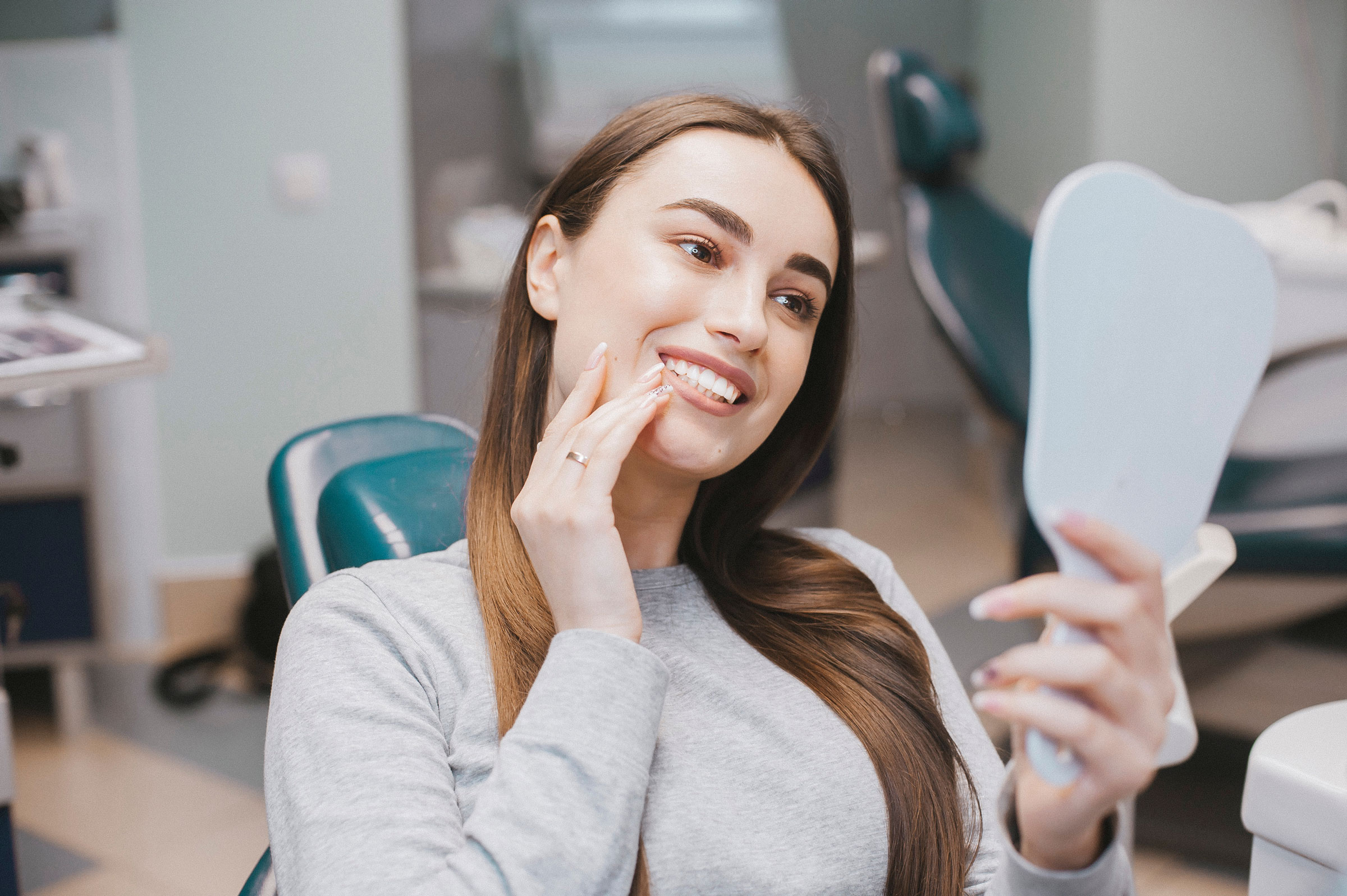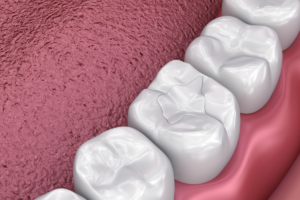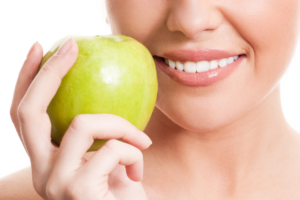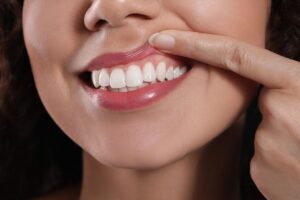According to the American Academy of Cosmetic Dentistry, discoloration is the number one concern people have with regards to their teeth. The good news is teeth discoloration can be efficiently overcome with the help of teeth whitening techniques.
Teeth Whitening
Teeth whitening is a cosmetic, restorative dental procedure that bleaches your teeth to make them whiter.
Tooth whitening has a long history: The ancient Romans attempted to whiten their teeth using urine as a rinse, as the ammonia in urine was thought to disinfect the mouth and whiten the teeth. This unpleasant practice was so popular that the emperor Nero taxed the trade. In the 14th century, teeth whitening, performed using metal files and nitric acid, was the second most demanded dental treatment. The mid-19th century brought whitening agents, and in the late 19th century, a mixture of hydrogen peroxide and ether alongside electricity was used to whiten teeth. At the beginning of the 20th century, hydrogen peroxide became the standard teeth whitening medium, and by 1970s it was well established that hydrogen peroxide was the most influential stain removal agent. In 1989, teeth whitening was performed utilizing 10% carbamide peroxide in trays.
Teeth Whitening Options
Recently, numerous teeth whitening techniques have been introduced into the market, each promising long-lasting outcomes with little to no side effects. They vary from home practices to advanced dental office whitening systems.
The ideal age for teeth whitening
According to the studies, there are no age-related restrictions to teeth whitening. However, you are recommended to wait until your permanent teeth have fully erupted.
Teeth Whitening Risks
An increase in tooth sensitivity and a mild irritation of the mouth’s soft tissues are the most common side effects of teeth whitening. Both conditions are temporary and will disappear within three days after the treatment. Tooth sensitivity often happens during the first stages of the treatment as a result of the bleaching agents, while tissue irritation is generally caused by an ill-fitting tray. Following the after-care tips will help eliminate the side effects.
Teeth Whitening Safety
The substances utilized in teeth whitening approaches should receive the seal of acceptance, indicating that the product has met ADA guidelines for safety and effectiveness. The ADA does not approve over-the-counter whitening products since professional supervision is necessary to ensure safe and effective use. However, there are several whitening toothpastes that have received the ADA seal of acceptance.
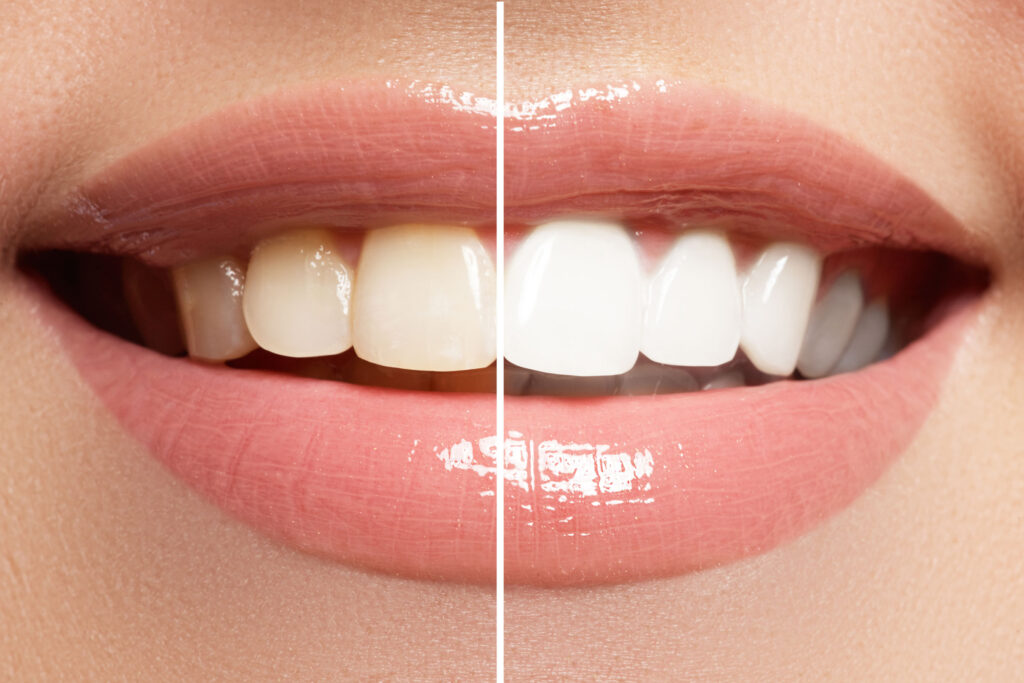
Follow-Up Care
Since you expose your teeth to an array of foods and beverages that can cause staining on presumably a daily basis, the results of dental teeth whitening cannot be permanent and may even fade in as little as a month. Avoiding certain foods and beverages can extend the effectiveness period to a little longer than one year, after which time another whitening treatment will be needed. To maintain your newly whitened teeth, you will need to:
- Avoid consuming products known to stain the teeth;
- Rinse your mouth immediately after consuming stain-causing foods or beverages;
- Follow oral hygiene practices such as brushing your teeth at least twice a day, flossing once daily, and using a whitening toothpaste to prevent yellowing;
- Follow touch-ups every six months. You may even require more frequent check-ups if you smoke or drink teeth staining beverages regularly.
Candidates for Teeth Whitening
If you are considering teeth whitening, you will need a consultation to ensure your eligibility and discuss the best approach for your teeth. You can ask for a whitening procedure if you are over 18 years of age and your teeth and gums are healthy. Individuals with gum disease or teeth with worn enamel are typically discouraged from undergoing teeth whitening. Also, cavities must be treated before any whitening procedures. Teeth whitening is not recommended for children under 16 since this procedure can irritate the pulp. Pregnant or lactating women should also postpone whitening their teeth.
Unrealistic expectations
- The degree of whiteness will vary from person to person depending on the condition of the teeth, nature of the stain, bleach concentration, duration, and the whitening method.
- You should not expect fillings, crowns, and other restorations to whiten. The whitening procedure should be done before placing dental fillings such as composite veneers, crowns, dentures, or porcelain restorations.
- You may also be disappointed if you expect your teeth to become blindingly white.
- If you are a smoker, you should know that satisfactory results cannot be promised unless you abstain from constant smoking.
- While yellowish teeth respond well to whitening, dark-colored teeth usually fail to react as well, and may be better candidates for other treatment approaches such as veneers, bonding, or crowns.
Stains
There are two types of teeth stains:
- An extrinsic stain, which develops on the outer layer of the enamel and is the most familiar type of dental discoloration. It is a result of oral contact with dark-colored substances. Therefore it can be caused by smoking, eating chocolate, drinking coffee, black tea, dark sodas, red wine, or beer.
- An intrinsic stain, which results from the discoloration of deeper structures within your tooth, giving it a yellow or gray cast. Tooth decay, oral injuries, dead pulp or tooth nerve, bleeding of your tooth, a pulp infection, dental trauma, tiny dental fractures, enamel imperfections, hereditary conditions, and overuse of fluoride can cause this kind of discoloration.
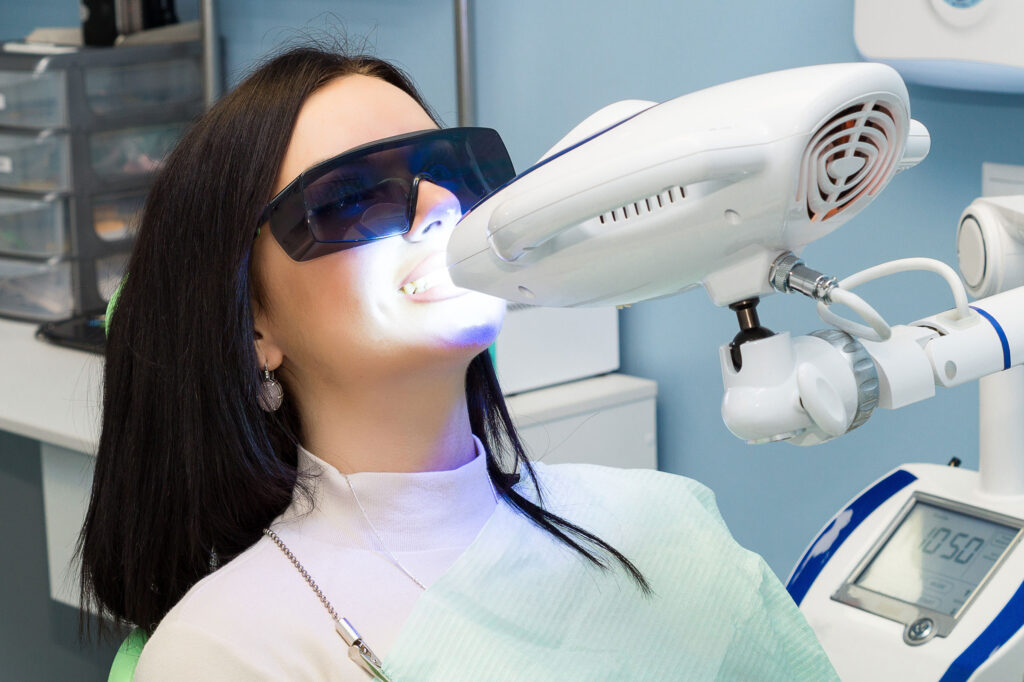
Teeth Whitening Techniques
Today, many people benefit from Fluoride-free and bio-compatible dental treatment methods to target teeth stains. Dentistry has been successful in helping patients get rid of their yellow teeth.
Whitening at home
There are whitening toothpastes, over-the-counter whitening strips, whitening gels, and tray-based bleaching systems available at drugstores.
Whitening toothpastes, compared to standard ones, contain relatively higher amounts of abrasives to help remove surface stains. Some whitening toothpastes contain gentle polishing or chemical agents that provide additional stain removal. Over-the-counter and professional whitening products contain low concentrations of hydrogen peroxide (a bleaching agent) that helps clear the stains and lighten tooth color.
Whitening gels are transparent, peroxide-based substances applied directly to the surface of your teeth with a small brush. Instructions typically recommend twice a day application for 14 days. You will notice initial results in a few days, and the final outcome lasts for about four months.
Whitening strips are virtually invisible strips coated with a peroxide-based whitening gel. The strips should be used twice a day for 30 minutes. Initial outcomes will be seen in a few days, though the final results need about four months to show up.
Tray-based tooth whiteners
A more traditional method of teeth whitening involves tray-based tooth whitening systems. This method involves filling a fitted tray with a whitening agent (carbamide peroxide-bleaching gel). You should place this tray over the teeth and wear it for a couple of hours every day or overnight for up to 4 weeks and even longer.
This bleaching method involves a few additional steps if performed in your dentist’s office: A protective gel or guard is positioned over the gums before applying the bleaching agent directly to the teeth, and the whitening procedure is hastened with heat, a special light, or laser light directed at the teeth.
Ozone / Oxygen Therapy
Applying Ozone over your teeth will whiten teeth much the same way as dental bleaches. This therapy not only whitens your teeth but also kills bacteria, controls gum disease, and decreases the expansion of dental cavities.
Venus White Chairside System
This system involves the best biocompatible practice of holistic and biological teeth whitening. It contains hydrogen peroxide gel that breaks down when applied to the teeth, eventually causing oxygen to enter the enamel and dentin, and bleach the stains within the dentinal tubules of the teeth. This whitening method is safe and will give you a bright smile, leaving the tooth structure intact.
Philips Zoom Professional Teeth Whitening
If you would like to whiten your teeth up to eight shades in less than 45 minutes, you can benefit from Philips Zoom and enjoy the prolonged results.
This method utilizes the power of ultraviolet light to target the yellow stains caused by aging, tobacco, dark colored soda drinks, tea, coffee, or red wine. If you are struggling with gray teeth, Philips Zoom could help alleviate the problem. Keep in mind however, that you cannot expect a dramatic change when it comes to treating gray teeth.
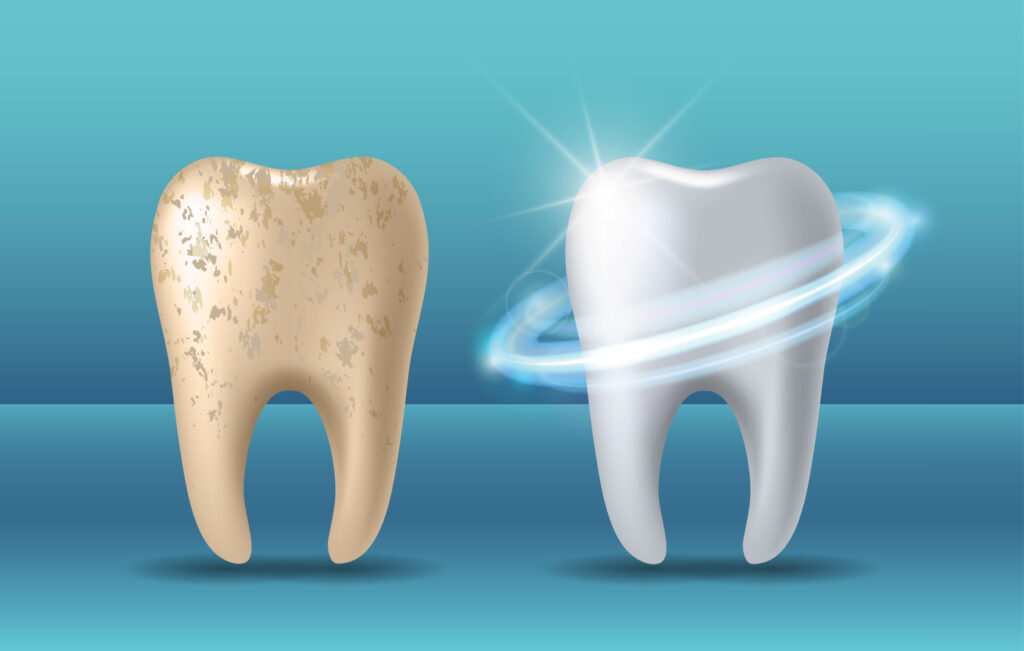
Zoom Chairside Light-Activated Gel
This system dramatically improves the whitening process. Thanks to the whitening LED accelerator, your teeth can become up to eight shades lighter in just an hour! There is a whitening gel that works together with the light to gently diminish the stains on your teeth while leaving the structure of your teeth unchanged. Once the treatment is complete, it leaves you with a fresh, bright smile.
KöR Whitening TM System:
KoR is a deep bleaching TM system known as a revolutionary teeth whitening technique that has resolved the numerous issues with other whitening procedures, such as failure to eliminate deep intrinsic staining, impermanence, and sensitivity. KoR whitening trays keep saliva and sulcular fluid out of the whitening trays, resulting in a thorough debris cleansing both between and within enamel prisms. The treatment is longer compared to other whitening systems (six to ten hours as opposed to 30 minutes), but it delivers amazing, long lasting whiteness.
Teeth Whitening At Home or At The Office?
None of the at-home teeth whitening procedures can even come close to the results you get at your dentist’s office. Whitening paste can lighten your teeth color up to about one shade, while the light-activated in-office whitening procedures can make your teeth three to eight shades lighter. Both whitening gels and strips contain peroxide in a much lower concentration than the peroxide-based products used by your dentist. Although some teeth lightening will be achieved by employing home whitening practices, the degree of whitening is much lower than what you get with dentist-supervised systems. The main differences between home whitening practices and in-office dental whitening procedures are:
- Strength of the bleaching agent
Home use products usually contain a 10 to 22 percent carbamide peroxide strength-bleaching agent, while professionally applied tooth whitening products contain hydrogen peroxide in higher concentrations ranging from 15 to 43 percent.
- Mouthpiece trays
With dentist-supervised products, your dentist will take an impression of your teeth and make a custom-made mouthpiece tray that fits your teeth. This personalization allows for maximum contact between the whitening gel applied to the mouthpiece tray and your teeth. The customized tray also minimizes the gel’s contact with gum tissue. Over-the-counter whitening products contain a one-size-fits-all tray. Ill-fitting trays could lead to irritation and discomfort as they cannot prevent bleaching gels from coming into contact with the gums and soft tissue.
- Additional protective measures
Your dentist will take protective measures before your office whitening treatment to protect your gums and oral cavity. Over-the-counter products do not meet these extra protective standards, however.
- Bleaching speed
At-home bleaching products generally need to be used two hours every day for up to one month. In comparison, in-office whitening procedures deliver the quickest and most effective results. These procedures could be sped up using heat, a special light, or a laser. You will notice the dramatic results just an hour after the treatment.
- Cost
Over-the-counter bleaching systems are the least expensive options available, while dentist-supervised whitening approaches are more costly.
- Supervision
You are on your own with over-the-counter bleaching products, while dentist-supervised whitening procedures offer more advantages: There is an initial oral examination, taking into consideration your complete medical history. This way your dentist will be able to plan the appropriate course of treatment for your type of stains based on the number, style, and location of restorations. The whitening procedure will be closely monitored and controlled, and your dentist will inspect your gums regularly for any signs of irritation and ensure that the customized tray is fitted correctly.
If you are going to discuss whitening your teeth, our professional staff will be happy to help at any time. Ariadental is equipped with modern dental treating systems and has no priority but your bright smile!
We will offer you the most effective solutions to your oral needs thanks to our advanced whitening in-office techniques and take-home kits. The new white dress of your smile awaits you here.








